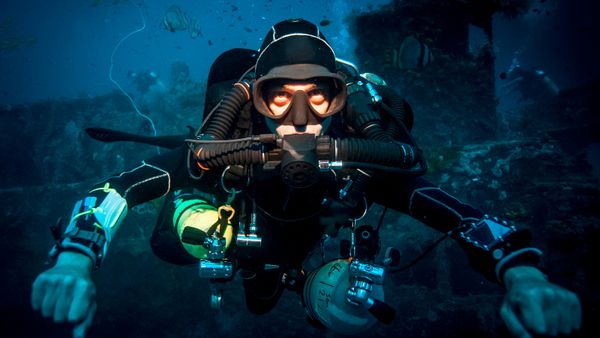Since man has walked the Earth, it seems like we've been fascinated with two things we weren't built to do -- fly like birds and swim like fish. We've all seen grainy black and white footage of some of the early flying machines, most of which involved mimicking the flight of birds by attaching wings to a human in some fashion. What doesn't exist so readily are images of our early attempts to become fishlike. This is mostly due to the lack of availability of underwater filming techniques at the time. But we do have some record of our quest for going underwater and staying there for prolonged periods.
The Greek philosopher Aristotle wrote about man's desire to spend time under the sea way back in the 4th century B.C.:
Advertisement
"They enable the divers to respire equally well by letting down a cauldron, for this does not fill with water, but retains the air, for it is forced straight down into the water."
What Aristotle was referring to was the earliest version of the diving bell. This was the first attempt man made at submersing himself underwater for an extended length of time, and laid the foundation for what would centuries later become scuba diving. Since Aristotle was a teacher of Alexander the Great, it should come as no surprise that the young conqueror allegedly used a diving bell several times -- at the age of 11 and then later at the Siege of Tyre in 332 B.C. These stories are not likely to be true, but there are paintings of Alexander sitting inside a glass barrel at the bottom of the ocean, so we know that the idea was in place. Inventor and artist Leonardo da Vinci also sketched early versions of the diving bell, though it's believed that like many of his inventions, he never followed through on its construction.
Read on to find out exactly what a diving bell is, how it works and when it was actually invented.
Advertisement




